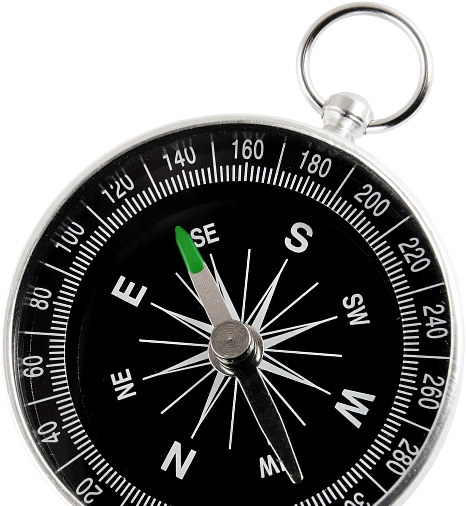6 Steps to Engaging Your Defensive Buying Groups
15 min

Executive summary
Modern B2B purchases are no longer made by individuals but by complex, risk-averse buying groups. To help marketing and sales leaders effectively engage these multi-stakeholder teams across every stage of the buyer’s journey, this article outlines a practical, proven approach to influence decision making and accelerate conversions.
It offers guidance on how to tailor outreach, content, and enablement to drive alignment, build consensus, and move buying groups forward—even amid lengthening sales cycles and fragmented engagement paths.

This article provides:
Today’s purchasing decisions are made by interconnected buying groups composed of multiple stakeholders across departments. These groups are built to align on priorities well in advance of engaging directly with a sales representative.
In fact, according to the 6sense 2024 Buyer Experience Report, the average B2B buying journey now spans 6 to 13 months, and buyers are often 70% through their decision making process before ever speaking with a vendor.
This prolonged timeline reflects a broader trend of buyers becoming increasingly defensive, choosing validated, low-risk solutions that integrate seamlessly with existing investments.
To meet this change, leading go-to-market (GTM) teams have shifted from legacy intent signals from form fills or content downloads to aggregated behavioral and intent-based indicators that span the full activity of an account.
This article outlines six key steps for identifying, engaging, and nurturing defensive buying groups, along with a strategic framework to guide the preparation and execution of your approach.
“In B2B marketing, the buying decision is often made before a salesperson ever enters the conversation, with buying groups reaching internal consensus early in their journey. The key is enabling brand champions within those groups to influence peers—something we have observed by analyzing how buyer behavior unfolds across stakeholders before outreach even launches.”

CMO, INFUSE
How have B2B buying groups changed?
There has been a significant shift in B2B buyer behavior, marked by caution, complexity, and a demand for efficiency, which, according to the INFUSE 2025 Voice of the Buyer report, is now the top investment driver for 56% of organizations.
These trends underscore a decision making process that is complex, non-linear, and reliant on overall group consensus, with purchases involving up to 12 stakeholders.
The complexity of buying groups is further compounded by the different needs and pain points of buyers at separate points in the B2B sales funnel—with many operating outside of reach in the dark funnel.
In addition, as new buying group members are added to the process, these decision makers enter at the top of the funnel. In this way, a large account is always in the discovery stage, especially as members with unique roles have specific needs.
How B2B buyers have evolved and transitioned to buying groups:
Individual buyers
Buying groups
Engagement of specific individuals
Engagement of all individuals involved in the purchase decision
Decision making autonomy
Consensus
Linear journey
Non-linear journey
One buyer and funnel stage
Many buyers at different stages of the funnel
One signal
Account-level intent
Single point of contact
Multiple stakeholders
Short sales cycle
Long sales cycle
Inside the new B2B purchasing journey, buyers move together, but not in sync:

6-step strategy for engaging the entirety of buying groups during their purchasing journey
This stage represents the buyer’s (or collective buying group’s) realization of a problem and their evaluation of whether this problem warrants action and, if so, what solutions are available. It is also the stage where buyers have the first contact with your brand.
Therefore, it is critical to spark early engagement by showcasing authority and insights that align with your buyer’s initial research.
To do this, marketers need to build a compelling brand presence that connects to the organization’s UVP, which sets the stage for earning consideration and motivates buyers to continue.
Due to the increasingly independent and risk-averse nature of buyers, it is important to begin nurturing early to increase your organization’s discoverability and establish your brand authority, expertise, and value. Providing the necessary tools and information to enable self-led research is an essential element of this strategy.
Marketing team:
Sales team:
Content recommendations to help buyers identify their needs:
Content type
Purpose
Trend and industry insight reports
Educate buyers on market shifts, risks, and future-state thinking
Subject matter expert (SME) content
Share big-picture views that challenge assumptions or spark curiosity. Focuses on industry pain points, buyer trends, or misunderstood risks
Webinars/explainer videos
Simple, low-commitment formats to introduce new ideas or solutions. Provides value without requiring commitment
Educational blog posts
Answer common questions or explore early-stage problems. Non-promotional and insight-led
Infographics
Easy-to-scan overviews that highlight key stats, frameworks, or processes
Self-assessment tools
Content that evaluates current performance
By this stage, buyers have defined the specifics of their needs and have identified clear challenges they need to solve. This is a critical turning point when stakeholders or decision makers actively enter the B2B buying process. Most importantly, it is at this point that the buying group is formed.
Help buyers commit with targeted content that builds credibility and trust, which will guide them toward ultimately shortlisting your brand for consideration later on.
Marketing team:
Sales team:
Content recommendations to help buyers commit to change:
Content type
Purpose
Product demo videos/live demos
Showcase how the solution works and solves specific challenges
Client case studies
Highlight measurable outcomes for similar organizations, ideally with metrics (ROI, conversion lifts, time saved)
Technical one-pagers
Show how your solution fits into their existing tech stack with minimal disruption
Implementation guides
Help buyers visualize a smooth transition and set expectations around support
Security and compliance documentation
Especially important for enterprise and regulated industries
Executive endorsements/peer testimonials
Help close senior stakeholders with social proof from trusted voices
Master the art of buyer engagement—from targeting to tracking
Our demand generation experts are here to help you start creating content that converts buying groups into high-value clients.
During this evaluation stage, buyers will begin actively researching solutions and comparing vendors to see which is the best fit. Buyers will likely revisit research and identify the organization best suited to meeting their needs from a curated list. Therefore, the priority should be earning a spot, particularly as 38% of B2B buyers will go on to purchase from the first vendor they consider (Voice of the Buyer 2025).
59% of buyers trust consultants and SMEs the most during evaluation (Voice of the Buyer 2025).
Position your solution as the best-fit choice through educational tools and omnichannel presence.
Marketing team:
Sales team:
Content recommendations to help buyers with competitor comparison:
Content type
Purpose
Solution comparison guides
Help buyers evaluate different approaches, tools, or vendors
How-to guides and playbooks
Tactical, step-by-step guidance that positions your approach as the best path forward, validated by data insights
Case studies and success stories
Show real-world outcomes from organizations with similar pain points
Expert webinars
Topic-specific sessions with experts or client participation to build trust
Whitepapers and eBooks
Authoritative content that educates on frameworks, methodologies, or outcomes
Product overviews
Still educational, but starting to tie your solution to the buyer’s problem
Client testimonials
Build social proof and trust in your expertise
Buyers at this stage of the B2B buying process have shortlisted their options and are seeking to secure buy-in from other stakeholders within the buying group. Consensus is required before a purchasing decision can be made.
The goal of marketing and sales teams is to create a seamless buying journey that enables buyers to reach a consensus independently. Make your brand the top choice by enabling internal champions and simplifying the decision making process.
Marketing team:
Sales team:
Content recommendations to help buyers shortlist vendors:
Content type
Purpose
Stakeholder-facing business case decks
Pre-built presentations or slides to help internal champions articulate value, ROI, and implementation readiness
Executive summaries
Concise overviews focused on business impact and alignment with strategic goals
Case studies featuring cross-functional success
Examples where marketing, sales, IT, and operations benefited—showing the solution solves more than one department’s pain point
Security, compliance, and IT integration documentation
Tailored technical assets to remove objections from legal and IT
Client advocacy content (testimonials, videos, peer connects)
Human stories from credible buyers in similar roles/industries to reinforce trust and relatability
Implementation timeline or change management guide
Clear visibility into “what happens next” helps reduce inertia and reassure executives
Pricing breakdown and option matrix
Show flexible tiers, use-case packages, or phased rollout options to support stakeholder negotiation
With the support of all members, the buying group will be finalizing the last details of deciding on a purchase. They will be prioritizing low-risk solutions that meet their performance goals, are easy to implement and integrate, and hold tangible business value.
Reinforce trust and remove final objections with proof points that match stakeholder priorities.
Small details hold greater importance and may be the deciding factor between one solution and another.
Marketing team:
Sales team:
Content recommendations to help buyers validate vendors:
Content type
Purpose
Final pricing and packaging sheets
Clearly break down tiers, inclusions, optional services, and volume-based pricing to establish clear expectations
Contract walkthrough
Transparency here accelerates legal review and builds trust in the relationship
Implementation readiness checklist
Reinforces preparedness on both sides and reduces perceived onboarding friction
Client references
Live validation from a real client adds credibility and emotional assurance
IT and integration confirmations
Help IT feel confident that integration will be fast, secure, and compatible
Legal/compliance FAQ
Provides assurance of legal or regulatory compliance
The buyers who will use your solution directly will typically research best practices to avoid losing time learning at the time of implementation, placing them at a different stage of the funnel than the rest of the buying group. Support confident adoption and accelerate onboarding by anticipating user needs pre-sale.
Marketing team:
Sales team:
Content recommendations to help buyers make a final decision:
Content type
Purpose
Onboarding guides
Help users feel prepared before kickoff. Include timelines, responsibilities, and setup checklists
Best practices content (videos, blog posts, guides)
Share how other teams have succeeded quickly with your solution
Client enablement hub/resource library access
Provide early visibility into training resources, documentation, and support contacts
Derisk your solutions to reach the top of buyer shortlists
Our demand generation experts are available to help you deploy targeted buyer enablement strategies that convert complex buying groups into committed clients.
4 best practices for preparing your full-funnel buying group strategy
When engaging buying groups, it is important to build a thoughtful understanding of all its members. This should encompass their different needs and pain points, as well as the stages they enter into and influence the buying journey.
To help ensure your campaigns are effective and well-received, consider the following best practices for full-funnel engagement:
Target buying group members precisely by understanding their preferences, authority, and current state.
Researching the buying group and organization provides you with an understanding of the status quo and establishes what would make their day-to-day and GTM goals more achievable.
To establish a clear understanding of how to approach the buying group of each target account, it is beneficial to first identify and perform detailed research on its members. Gather as much information on each member’s preferences, both in terms of the type of content they consume and the channels they typically frequent (psychographics can be particularly useful for gleaning this data).
Your research should also include their background within the organization and the authority they hold in buying decisions. This can help determine the role of each buyer within the group to guide your messaging and targeting strategy.
Best practices for researching buying groups:
When reaching out to a buying group, it is important to first understand whether the individuals involved align with your Ideal Client Profile (ICP). Drive relevance and alignment with personas tailored to roles, pain points, and journey stages.
Developing multiple buyer personas for different roles and offerings can help you identify the most suitable content for outreach. This approach also guides your engagement strategy, helping to ensure your message remains relevant, well-received, and tailored to their individual needs.
Best practices for creating buyer personas:
Ensure content alignment and reduce friction with journey maps that reflect how groups buy today.
A seamless buyer’s journey is a frictionless, personalized path that guides B2B buyers from awareness to decision and beyond—aligned with how modern buying groups research and engage.
The overall objective is to help buyers recognize a challenge or opportunity and introduce your brand as a trusted resource. It starts by attracting interest through thought leadership and intent-based targeting, then nurtures consideration with educational content, webinars, and personalized ABM campaigns. As buyers approach a decision, validation assets like case studies and product comparisons reduce risk and accelerate consensus.
Best practices for mapping the buyer’s journey:
Maximize campaign impact through unified GTM strategies, real-time feedback loops, and multithreaded outreach.
Client success teams maintain relationships with existing accounts, while sales engages directly with active prospects—making both critical sources of insight. Their feedback can validate persona accuracy, refine messaging, and confirm whether campaigns are addressing real buyer pain points.
To reach the full buying group effectively, it is essential to establish clear, ongoing information flows between marketing, sales, and demand professionals. This enables true multithreading: nurturing every stakeholder involved in the decision—across roles, seniority levels, and geographic regions.
Since different personas enter the journey at different times and influence distinct stages, alignment across teams is key to ensuring a cohesive, responsive GTM approach.
Best practices for aligning teams to target B2B buying groups:
Key takeaways
Buyers have evolved, so should your strategy
Our demand experts work with you to deliver the experiences buying groups expect—and drive your business outcomes.












